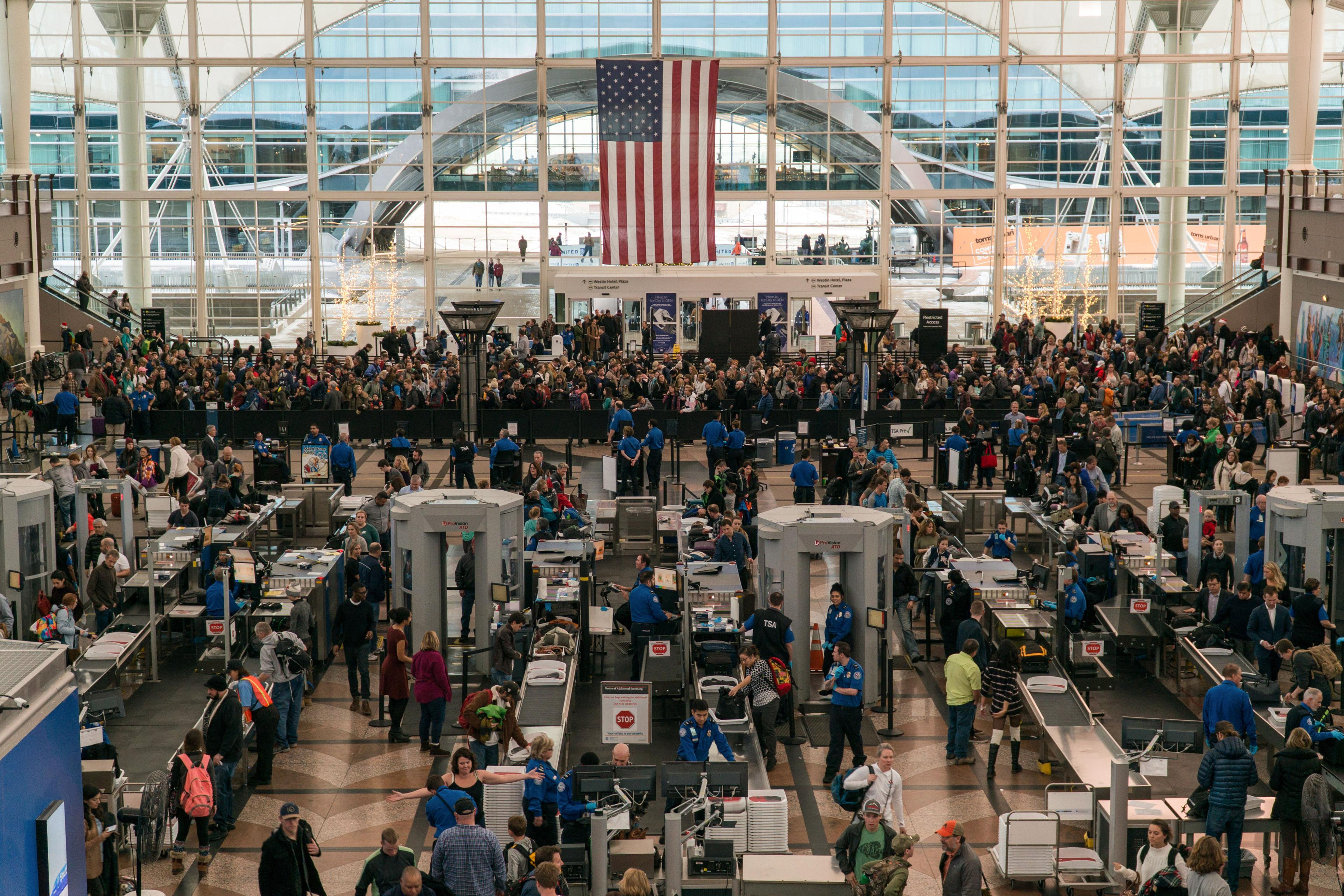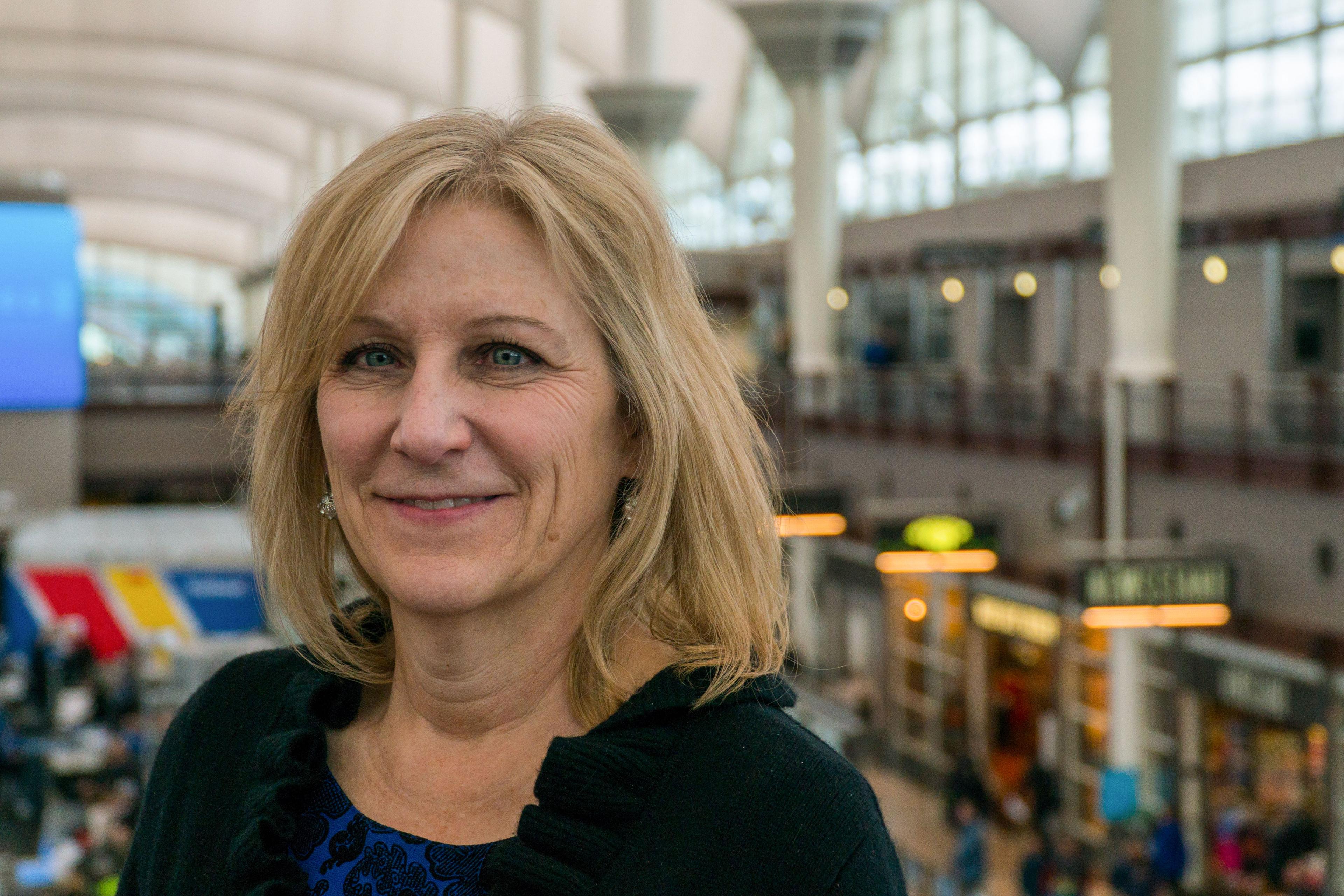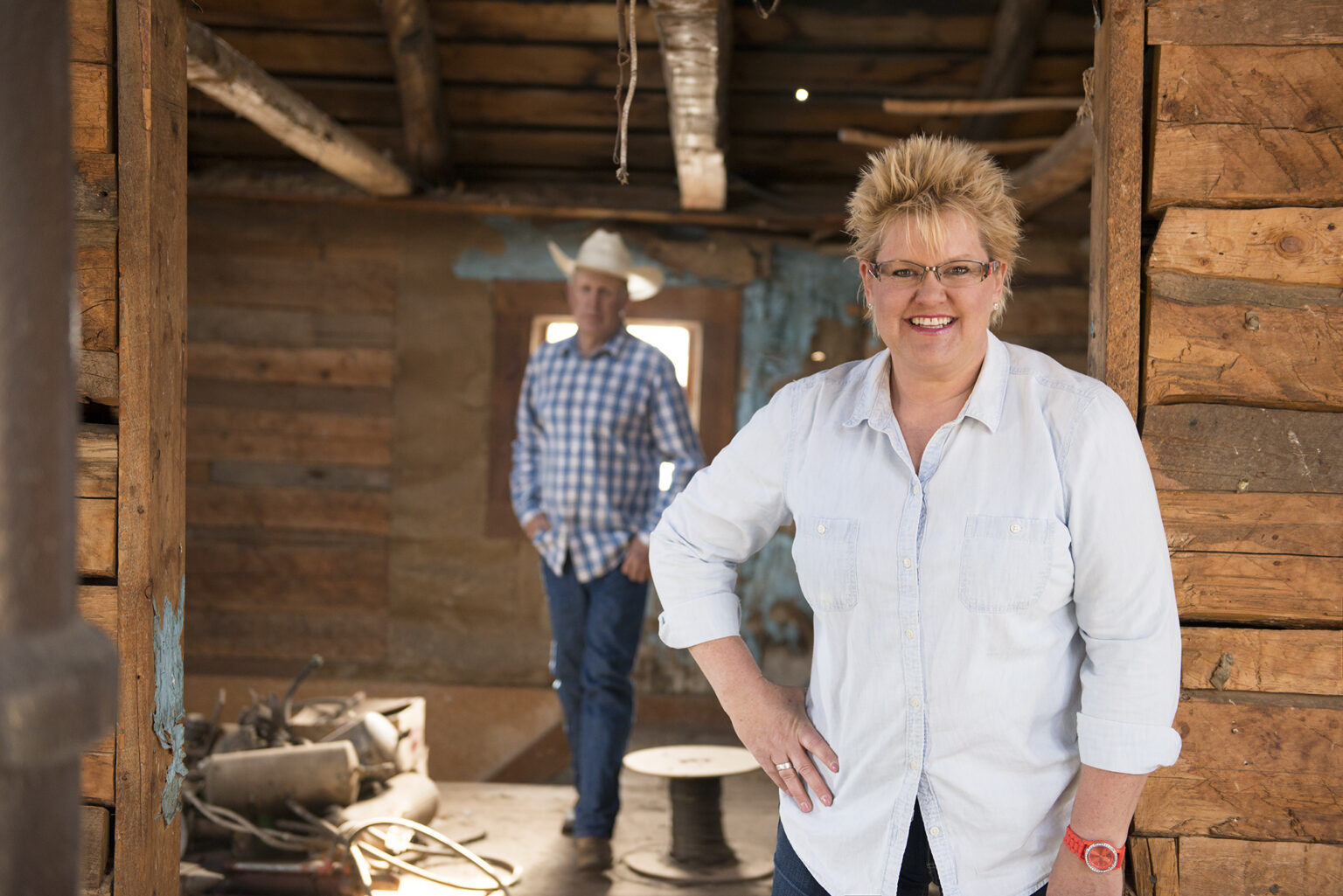

When Denver’s new airport opened in 1995, it came under harsh criticism for how big it was, how far away it was, and how much it cost.
More than 20 years later those concerns have faded as the airport now bursts at the seams — 2017 was the hub’s busiest year ever. Thankfully, says CEO Kim Day, city leaders had the foresight to put the airport out where they did, not just expand the old one at Stapleton.
“Build an airport for the future,” Day says. “And you couldn’t do it if you didn’t go 25 miles away, right?”
Air travel has boomed since DIA opened on the plains east of Denver’s core. More than 60 million passengers flew through the airport last year. The problem: it was not designed to handle that volume. More planes and more people means more projects as the airport expands and refurbishes. First, a major redo of the iconic tented Great Hall, where the security lines are now.
When the airport first opened this area looked very different. Then the terror attacks of September 2001 and the formation of the Transportation Security Administration changed everything.
“It was trees and water, and places to sit. It was lovely,” Day says. “But this is obviously a critical operation in the airport, we can’t get rid of it. But what we want to do is move it a place where it’s not so exposed.”
Post 9/11, this is not an optimal setup. The Great Hall project will move the state of the art security check system and open up the space. Since passengers will have already gone through security, they can now hang out — and spend money — in the hall’s updated shops and restaurants.
Denver City Council approved the Great Hall contract for $1.8 billion. But that’s not all.

Another $1.5 billion worth of construction will start at about the same time. That’ll add 39 new gates to the existing concourses, and expand the airport capacity up to 80 million passengers a year, up from the airport’s original 50 million passenger capacity.
Denver’s airport is actually really young in airport years. Earl Heffintrayer, an analyst for Moody’s credit rating agency, finds it “surprising that they’re already requiring gate expansions.”
He says, however, that air travel has taken off everywhere, and airports across the U.S. have neglected improvements. The nation’s busiest airport, Atlanta’s Hartsfield-Jackson, is going through it’s own $6 billion expansion and renovation. NYC’s LaGuardia is spending $4 billion on redevelopment. Kansas City voters overwhelmingly approved a $1 billion overhaul of their terminal in the last election.

“Airports look both dated, and in some ways became functionally obsolete,” Heffintrayer says. “So, what we see now is that some airport are starting to catch up just on improving their facilities to get them to a better state of good repair, and some are actually expanding.”
Almost every major U.S. airport has some multi-billion dollar project going on, so from a competitive standpoint DIA can’t stay put.
Moody’s analyzed the debt at DIA, and the airport is in a great position to fund new construction. The original bonds used to build the airport in the 90’s will begin to retire in 2025, allowing new borrowing without over leveraging.
Most people think DIA’s Great Hall redesign and the gate expansion are good ideas, but not everyone is cheering.
“What they’re doing is a ‘yes.’ How they’re doing it is a question mark,” says Denver City Councilman Rafael Espinoza. He laments one major provision of the Great Hall deal. Its cost. It’s a public private partnership where much of the risk of the project — if there are delays or big redesigns — is on the developer. The airport, he says, is paying for peace of mind.

“We’re paying premiums to sort of avoid the embarrassment of airport past, right?” says Espinoza, who voted against the contract which still passed 10-2 in council. “The first airport was a year behind and a billion dollars over budget while we were waiting for that baggage system, but we survived that and we thrived despite it.”
Longtime Denverites will remember the once-promised revolutionary automated baggage system that later became an albatross that delayed the airport’s opening. Espinoza says there are talented people running the airport, and he’d have liked to see them manage the construction, and take on the risk, themselves.
CEO Kim Day says the contracts are in the best interests of the city. The massive Great Hall project is “going to be so complex,” Day says and it’ll be run by some of the most talented airport contractors in the world.
“We wanted someone else to take that risk on, quite honestly,” she says. “If this was a standalone building we probably never would have gone this way.”
Brace yourselves travelers: construction begins in the summer and won’t wrap up until 2021.









